Duane Thresher, B.S., M.S., Ph.D., CEO
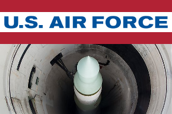
U.S. Air Force Brat
I was a U.S. Air Force "brat" (military dependent), born on an Air Force nuclear missile (ICBM) base during the Cold War while my father, an Air Force officer, was manning a missile silo, and I was raised on Air Force bases throughout the United States and in Japan.
(Interestingly, regarding ICBMs, a few years ago my wife, daughter, and I lived among active silos in Montana and while I was at MIT I did some mathematical modeling of nuclear war scenarios with Russia, including learning about radioactive fallout and the effects of radiation on humans.)

B.S. from MIT in Electrical Engineering and Computer Science
Since Information Technology (IT) is really communication-of-information technology, IT is mostly computer networking. (Cyber is a prefix meaning IT, so for example, IT security is also known as cybersecurity.) "Computer" includes supercomputers, servers, desktops, laptops, tablets, phones (landlines and cells), TV, etc. There has been a "convergence" and all of these devices now communicate — their most important function — over the same network, the Internet . Thus, being an IT expert means being a networking expert. (For more see What is IT and What Makes Me an Expert?)
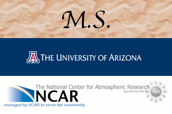
M.S. from UA and NCAR in Supercomputing
I took many advanced courses at the University of Arizona (UA) regarding climate modeling on supercomputers and did very well in all of them.
I then did research in climate modeling on supercomputers there using National Center for Atmospheric Research (NCAR) supercomputers, some of the fastest in the world.
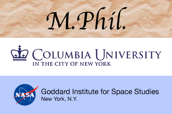
M.Phil. from Columbia and NASA GISS in Supercomputing
At Columbia University and NASA Goddard Institute for Space Studies (GISS), before I was allowed to pursue a Ph.D., I had to take numerous advanced courses regarding climate modeling on supercomputers, in which I did very well, and pass an oral qualifying exam, all for which I received an M.Phil. (Master of Philosophy).
Columbia and NASA GISS are in Manhattan, New York City, so during 9/11 I was thus living and working there, where both World Trade Center towers were brought down by foreign terrorists in hijacked airliners. This brought the issue of security close to home for me, particularly IT and security since 9/11 Was Due to IT Incompetence. Moreover, after 9/11, foreigners working at NASA, and there were/are many, had to undergo lengthy background checks in order to use the supercomputers, even those foreigners who had already been using them for years (see IT Hiring: Foreigners in Principles of IT Incompetence).
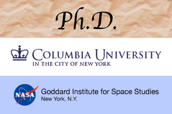
Ph.D. from Columbia and NASA GISS in Supercomputing
For my Ph.D. I continued to do research in climate modeling on supercomputers at Columbia University and NASA Goddard Institute for Space Studies (GISS) using NASA supercomputers, also some of the fastest in the world, like those at NCAR.
Again (see M.S. Credentials entry), this research required a lot of sophisticated programming (i.e., computer science; see B.S. Credentials entry) with knowledge of the underlying hardware (i.e., electrical engineering; see B.S. Credentials entry). For advanced study in this I attended NASA's High Performance Computing School at the Goddard Space Flight Center in Greenbelt MD, as well as building my own "supercomputer" (same networked parallel processors but fewer and slower).
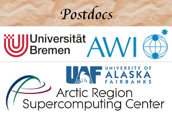
Postdocs in Germany and Alaska in Supercomputing
For my postdocs (postdoctoral positions) I continued to do research in climate modeling on supercomputers; first in Germany at the University of Bremen and the Alfred Wegener Institute (AWI) and then in Alaska at the University of Alaska Fairbanks (UAF) and the Arctic Region Supercomputing Center (ARSC).
As an American living and working in Germany among the native population (not on or near a U.S. Air Force base), many of whom do not like Americans, I had to be more concerned about security, both physical and IT.
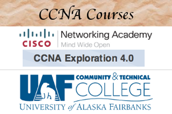
CCNA Courses (Four) from Cisco and UAF CTC
Cisco is the leading networking company, concentrating in the more physical/hardware end (routers, switches, etc.) of networking; i.e., more electrical engineering than computer science (see B.S. Credentials entry). Cisco also came up with the most popular networking certification, the Cisco Certified Network Associate (CCNA), which is often a requirement for IT jobs, when there are any. You don't have to take courses to get this, just pass a single for-profit test any way you can.
To have a much better understanding of the subject and to be able to prove this with my grades, I took four 4-credit (not 3 since it includes labs) CCNA preparatory courses (one academic year) from Cisco and the University of Alaska Fairbanks (UAF) Community & Technical College (CTC). I took the harder version of these courses, Exploration, not the easier version, Discovery. I did extremely and exceptionally well, having received an A+ in all four courses; see CCNA Courses and Grades below for course descriptions and all my grades in them.
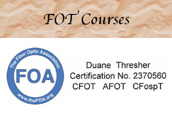
Fiber Optic Technician (FOT) Courses
Fiber optics are the fastest and most secure networking media (cables, so hardware, so an electrical engineering topic). They form the backbone of the Internet around the world (for the U.S. see the image on the Legal page). Thus, knowledge of fiber optics is necessary for networking and IT work (see B.S. Credentials entry).
I took a combined course to receive Certified Fiber Optic Technician (CFOT) and Advanced Fiber Optic Technician (AFOT) certifications. I then took a course to receive Outside Plant Fiber Optic Technician (CFospT) certification. In both courses I did exceptionally well; see FOT Certifications and Grades below.
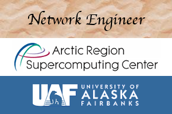
Network Engineer at ARSC and UAF
A network engineer works mostly at the more physical/hardware end of networking; i.e., more electrical engineering than computer science (see B.S. Credentials entry).
I was a network engineer at the Arctic Region Supercomputing Center (ARSC) at the University of Alaska Fairbanks (UAF). ARSC had some of the fastest supercomputers in the world and was a Department of Defense facility, which thus emphasized security, including requiring security training.

Security Expertise from Hacking and Thresher Networks
In addition to the considerable network, thus IT (see B.S. Credentials entry), security education and experience I received above, I gained even more from two importantly-different perspectives — as victim and as hacker — while CEO of my first IT company, Thresher Networks LLC (Montana).
My family and I were victims of not one, but two(!), major health insurer data breaches: Montana Department of Public Health and Human Services (MT DPHHS) and Premera Blue Cross.

Web Programming Expertise
I have been programming websites since near the beginning of the Web back in the 1990's. I've kept up with the extensive changes in web programming over the years by practice and study, including reading books on the subject, not just Googling for code to copy, which has become standard for website designers and schools like community colleges. Programming well in any language is more quickly learned once you have a solid foundation in computer science and I have a B.S. from MIT in Electrical Engineering and Computer Science.

Email Expertise
I have a long history, starting at MIT and including Antarctica, with email technology, which is mostly protocols like POP and IMAP and programs like email clients, encryption systems, and email servers. I think email is the best form of communication so during this time I used email a lot (still do). I thus developed well-thought-out ideas on how email should be done, particularly since I so often suffered through it done incompetently. To implement these ideas myself, I studied how email works, including reading books on the subject — not just Googling for settings, like most email administrators — and using all the programs. All this led to Apscitu Mail, about which you can read more at the Apscitu Mail website.
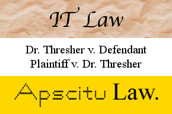
IT Law Expertise
I do not have a law degree from a law school (although my alma mater Columbia University has one of the top-rated law schools), but I have educated myself extensively about the law, particularly IT law, and not just because the law is a part of almost all IT issues about which I consult and write. I also have extensive legal experience, which is part of the reason for educating myself about the law. I have prosecuted (instituted legal proceedings against) and defended my own cases, not as a lawyer who has passed the bar, but as a pro se litigant.
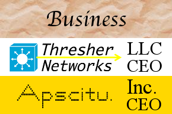
Business Expertise
While I was at MIT getting a B.S., I took economics and did very well. While I was at Columbia University getting a Ph.D., I took business courses at the Columbia Business School, a top business school in the U.S.
When I moved to Montana from Alaska, where I was a network engineer, I started my first business, Thresher Networks LLC, of which I was CEO. After a considerable amount of study, I had formed my own multi-member LLC, without need of a lawyer, after finding them wanting.
